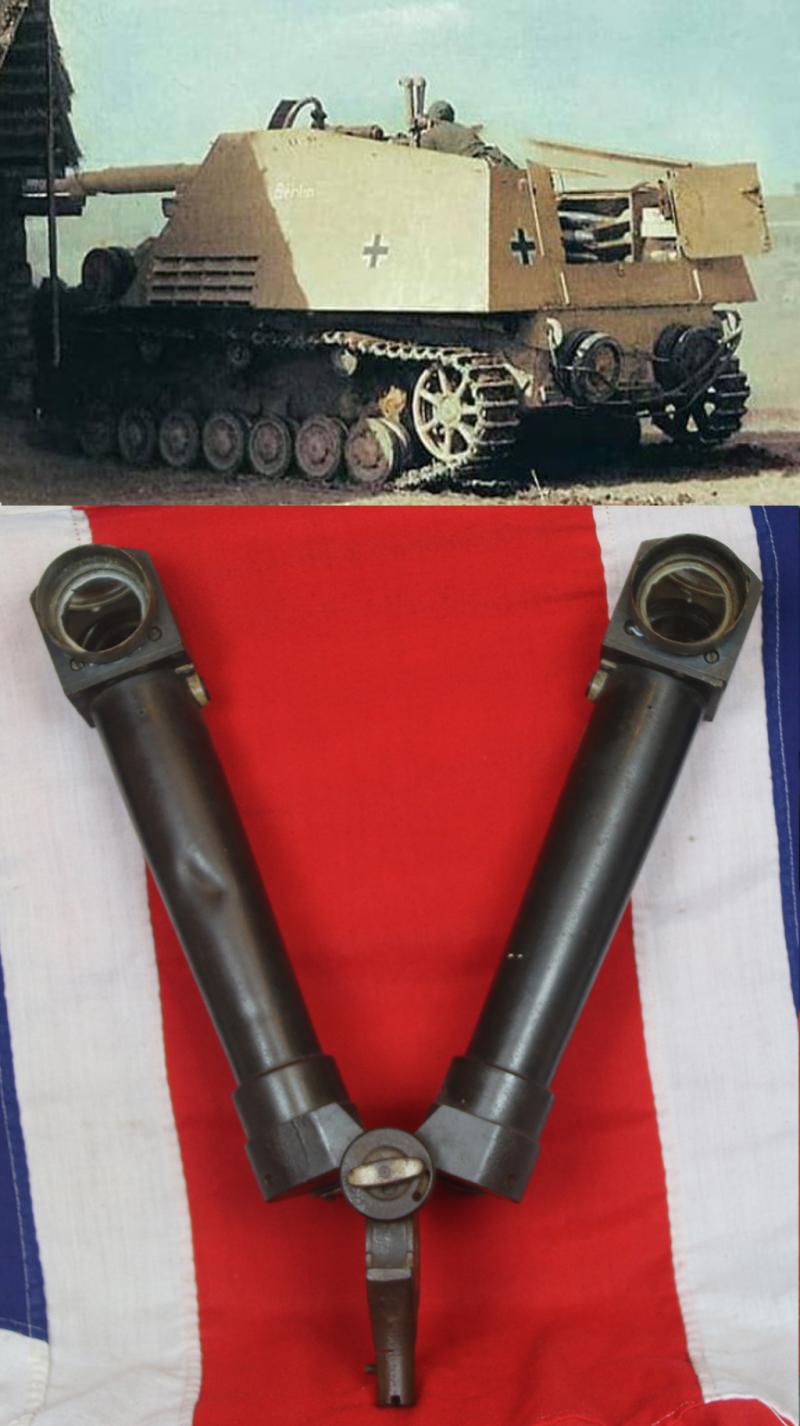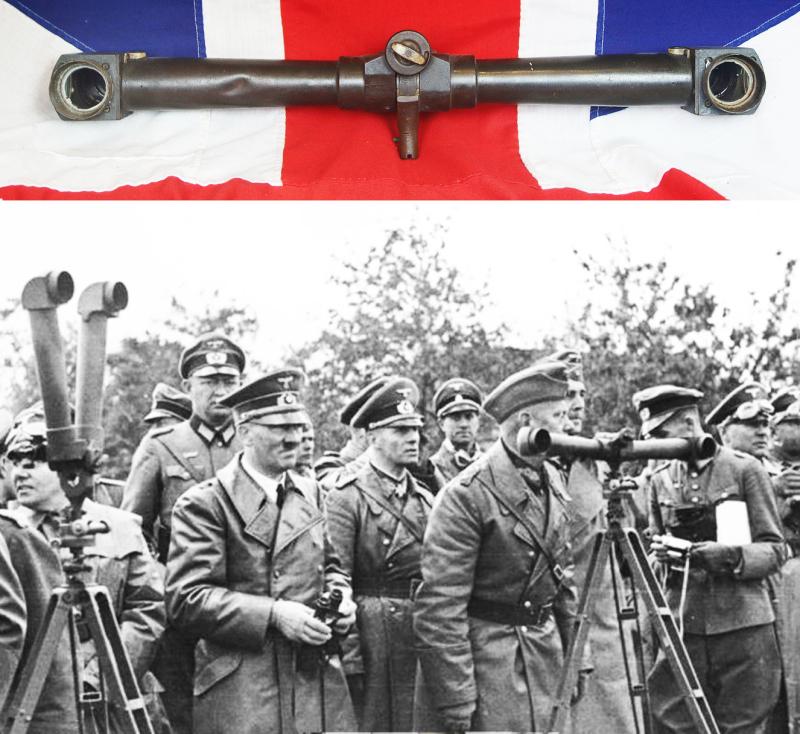Original German WWII ‘Rabbit Ear’ Optic Sighting Periscope, Scherenfernrohr S.F.14.Z.Gi. Tank Turret Mounting
Original WWII German OBSERVER’S SF.14z “RABBIT EAR” FIELD GLASSES. (Scherenfernrohr) for: Observation and reconnaissance; Measuring angles of azimuth; Measuring angles of site and elevation; Measuring height of shell bursts; Establishing safety zones for advancing friendly troops; and to lay field guns.
It was often seen employed in different roles such as in vehicles being specifically delivered as standard equipment in many German armored fighting vehicles such as the StuG III, Jagdpanzer 38, Jagdpanzer IV, Panther, the Nashorn and on the King Tiger where it can often be seen poking out the commander’s cupola, primarily as a safe method for him to observe the enemy without risk to life.
SF.14Z was also used by infantry type artilery spotters. Not much point giving it to these guys if you cant use them to estimate range.
Range estimation is critical to acheive a first round hit by greatly increasing accuracy, which is what you want when hunting tanks. SF.14Z also have a magnification of 14. The tank equivelent of a snipers sight.
The Germans soon realised that the commander using the SF.14Z to give the correct range to the gunner wasnt just good for accurate HE shoots but made for potent tank killer.
So they then issued the SF.14Z to most of their panzerjagers.
It appears that another famously accurate German tank killer the Nashorn was also equiped with SF.14Z rather than a rangefinder per see.
According to "Der Artillerist, Der Kanonier (1940) the Scherenfernrohr was to be used for:
1) Observation and reconnaissance
2) Measuring angles of
3) Measuring angles of site and elevation
4) Measuring height of shell bursts
5) Establishing safety zones for advancing friendly troops
6) And to lay field guns.
To aid ground infantry and artillery observers the Scherenfernrohr was used in conjunction with a tripod leg assembly. It normally came with accessories such as the azimuth mount and spirit level, tripod, carrying case, and other items such as a battery powered removable illumination lamp kit and a trench mount (often referred to as a tree screw which was approximate to a sort of cork screw that could allow the mount to be imbedded in wood or the ground).
A dhq coded sight (by J.D. Möller G.m.b.H., Wedel)
Photos in the gallery of them used by Hitler, And Himmler, on down to Falshirnjager, Panzer crew and Nashorn crew.
This is a superb set of optical site in great condition, the screw covers have slightly loose threads
Code: 25556
790.00 GBP









